Mechanisms and Countermeasures on Sediment and Wood Damage in Sediment Retarding Basins
Abstract
:1. Introduction
2. Analysis of the Sediment Control Function of Sediment Retarding Basins
2.1. Experimental Outline
2.2. Experimental Results and Discussion
3. Analysis of Sediment Control Function of Wood Debris Retarding Basins
3.1. Experimental Outline
3.2. Experimental Results and Discussion
4. Numerical Analysis of the Control Function of Sediment Retarding Basins
4.1. Flow Equation
4.2. Analysis Conditions
4.3. Reproduction of the Experimental Results
5. Understanding the Impact on Sediment Control Function Using an Analytical Model
6. Conclusions
Author Contributions
Funding
Institutional Review Board Statement
Informed Consent Statement
Data Availability Statement
Conflicts of Interest
References
- Fujita, M. Influence of climate change on sediment disasters. J. Jpn. Soc. Eros. Control Eng. 2012, 65, 14–20. [Google Scholar]
- Japanese Ministry of Land, Infrastructure and Transport, SABO. Available online: http://www.mlit.go.jp/mizukokudo/sabo (accessed on 1 November 2021).
- Japan Meteorological Agency. Available online: https://www.data.jma.go.jp/obd/stats/etrn (accessed on 1 November 2021).
- Takahashi, T.; Nakagawa, H. Prediction of stone debris flow induced by severe rainfall. J. Jpn. Soc. Eros. Control. Eng. 1991, 44, 12–19. [Google Scholar]
- Technical Standards for River Works; Japanese Ministry of Land, Infrastructure and Transport: Tokyo, Japan, 2019.
- Matsumura, K.; Ishikawa, Y.; Osanii, T. An experimental study on sedimentation process on sediment retarding basins. J. Jpn. Soc. Eros. Control. Eng. 2001, 54, 33–42. [Google Scholar]
- Takahashi, T.; Satofuka, Y. Simulation model for channel variation in braided channel reach. Annuals od Disas. Prev. Res. Inst. Kyoto Univ. 1999, 42, 189–200. [Google Scholar]
- Hasanpour, A.; Istrati, D.; Buckle, I. Coupled SPH–FEM Modeling of Tsunami-Borne Large Debris Flow and Impact on Coastal Structures. J. Mar. Sci. Eng. 2021, 9, 1068. [Google Scholar] [CrossRef]
- Zischg, A.P.; Galatioto, N.; Deplazes, S.; Weingartner, R.; Leonardi, B. Numerical Simulation of Debris Flow and Interaction between Flow and Obstacle via DEM. Ph.D. Thesis, ETH Zürich, Zürich, Switzerland, 2015. [Google Scholar]
- Trujillo-Vela, M.G.; Galindo-Torres, S.A.; Zhang, X.; Ramos-Canon, A.M.; Escobar-Vargas, J.A. Smooth particle hydrodynamics and discrete element method coupling scheme for the simulation of debris flows. Comput. Geo Tech. 2020, 125, 103669. [Google Scholar] [CrossRef]
- Zhao, T. Investigation of Landslide-induced Debris Flows by the DEM and CFD. Ph.D. Thesis, University of Oxford, Oxford, UK, 2014. [Google Scholar]
- Zischg, A.P.; Galatioto, N.; Deplazes, S.; Weingartner, R.; Mazzorana, B. Modelling spatiotemporal dynamics of large wood recruitment, transport, and deposition at the river reach scale during extreme floods. Water 2018, 10, 1134. [Google Scholar] [CrossRef] [Green Version]
- SABO. Manual of Technical Standard for Establishing Sabo Master Plan for Debris Flow and Driftwood; Japanese Ministry of Land, Infrastructure and Transport: Tokyo, Japan, 2016. [Google Scholar]
- SABO. Japan Implementation of Debris Wood Measures–Immediate Response. In Office Contact; Japanese Ministry of Land, Infrastructure and Transport: Tokyo, Japan, 2015. [Google Scholar]
- What Is Silica Stone/Silica Sand (Quartz Stone/Silica Sand). Available online: http://www.mikawakeiseki.co.jp/silica.htm (accessed on 1 November 2021).
- Harada, N.; Takayama, S.; Satofuka, Y.; Mizuyama, T.; Nakatani, K. Fundamental experiment using steel stakes to capture driftwood on an impermeable type sabo dam. Annu. J. Hydraul. Eng. JSCE 2017, 73, 1351–1356. [Google Scholar] [CrossRef] [Green Version]
- Kimura, I.; Kitazono, K. Effects of the driftwood Richardson number and applicability of a 3D–2D model to heavy wood jamming around obstacles. Environ. Fluid Mech. 2020, 20, 503–525. [Google Scholar] [CrossRef]
- Shafiei, S.; Melville, B.; Shamseldin, A.; Beskhyroun, S.; Adams, K. Experimental investigation of tsunami- borne debris impact force on structures: Factors affecting impulse-momentum formula. Ocean. Eng. 2016, 127, 158–169. [Google Scholar] [CrossRef]
- Haehnel, R.; Daly, S. Maximum impact force of woody debris on floodplain structures. J. Hydraul. Eng. 2004, 130, 112–120. [Google Scholar] [CrossRef]
- Istrati, D.; Hasanpour, A.; Buckle, I. Numerical Investigation of Tsunami-Borne Debris Damming Loads on a Coastal Bridge. In Proceedings of the 17 World Conference on Earthquake Engineering, Sendai, Japan, 27 September–2 October 2021; Available online: https://www.researchgate.net/publication/342027873_Numerical_Investigation_of_Tsunami-Borne_Debris_Damming_Loads_on_a_Coastal_Bridge5542020 (accessed on 1 November 2021).
- Satofuka, Y.; Mizuayma, T. Numerical simulation on a debris flow in a mountainous river with a Sabo dam. J. Jpn. Soc. Eros. Control. Eng. 2005, 58, 21–27. [Google Scholar]
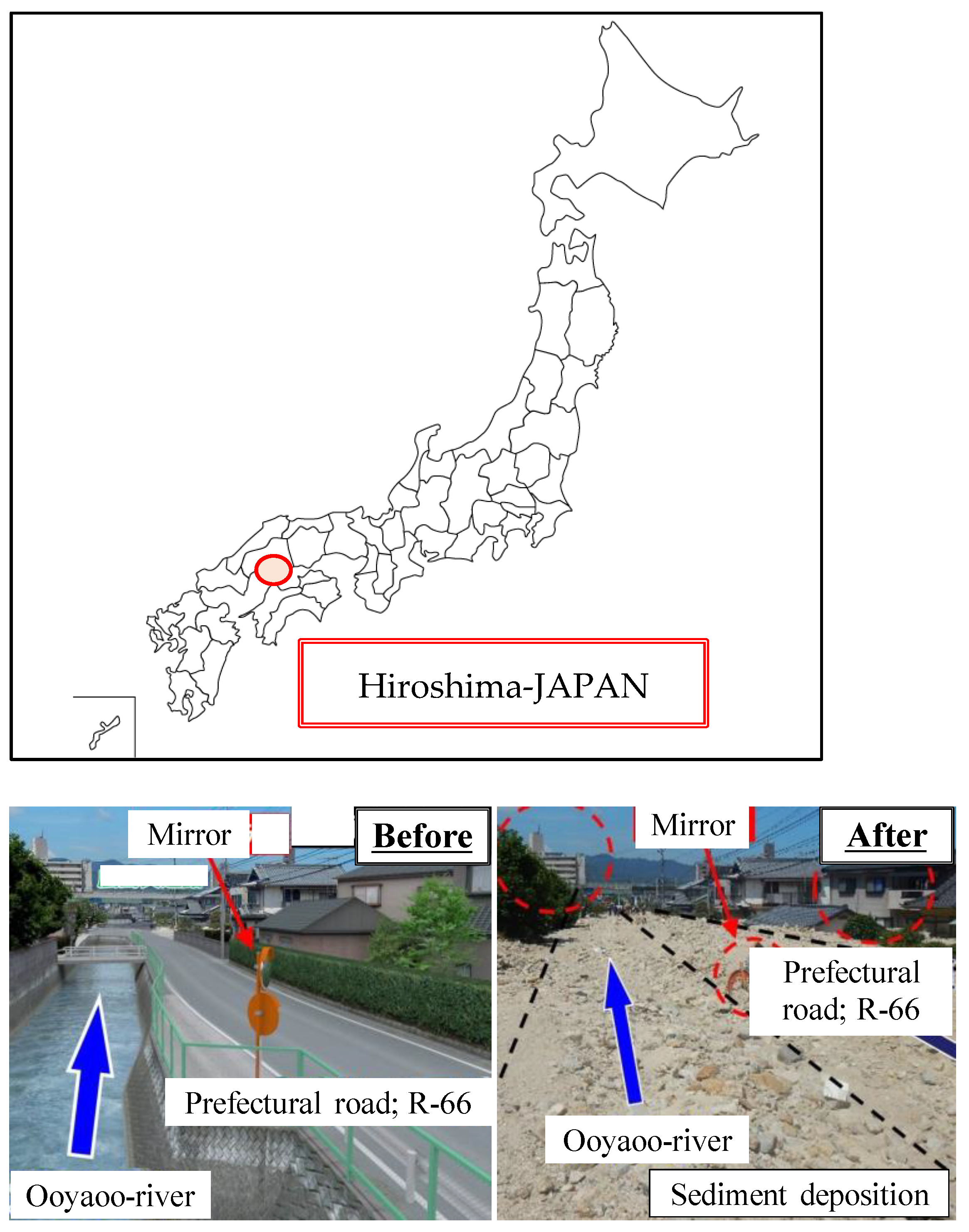


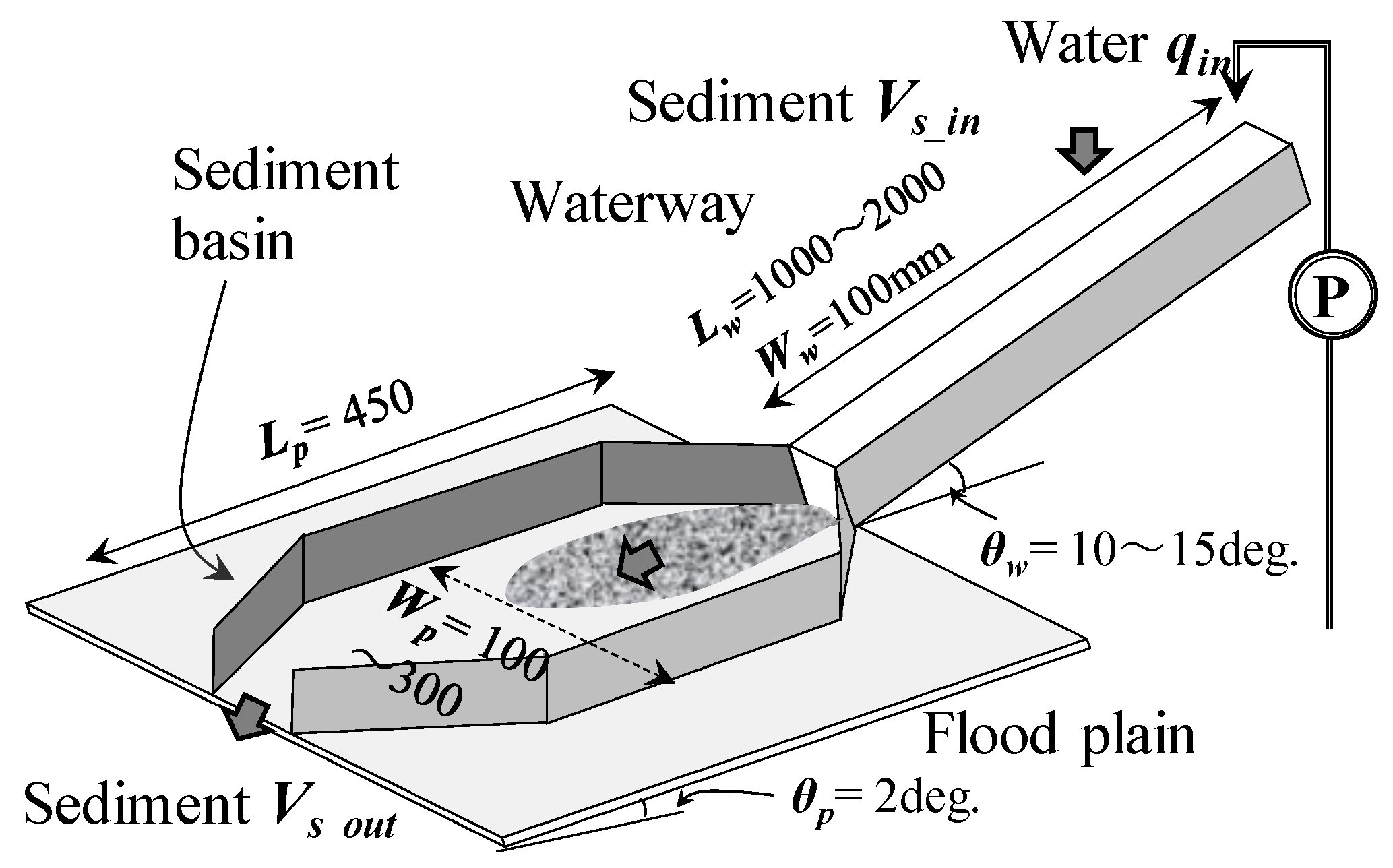

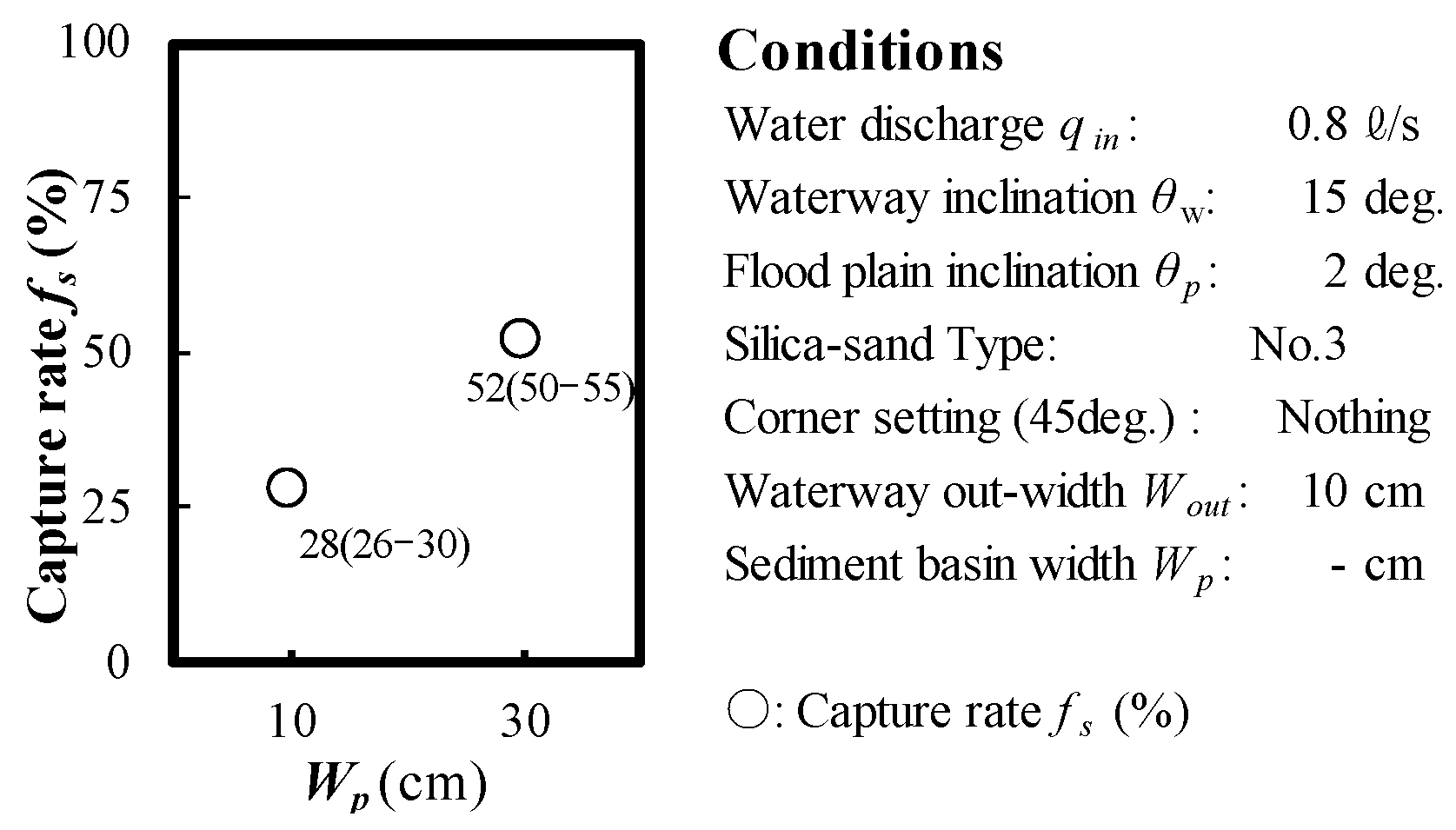
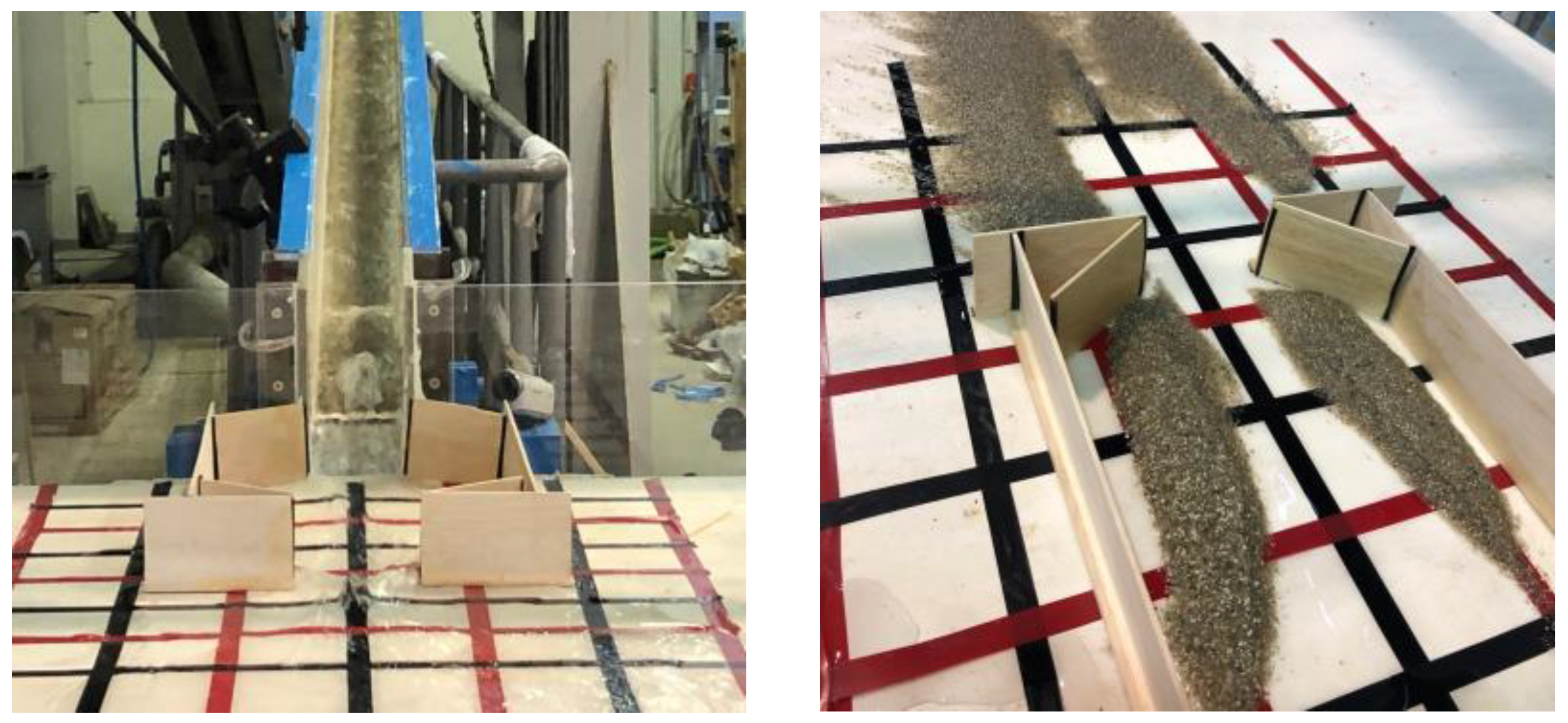

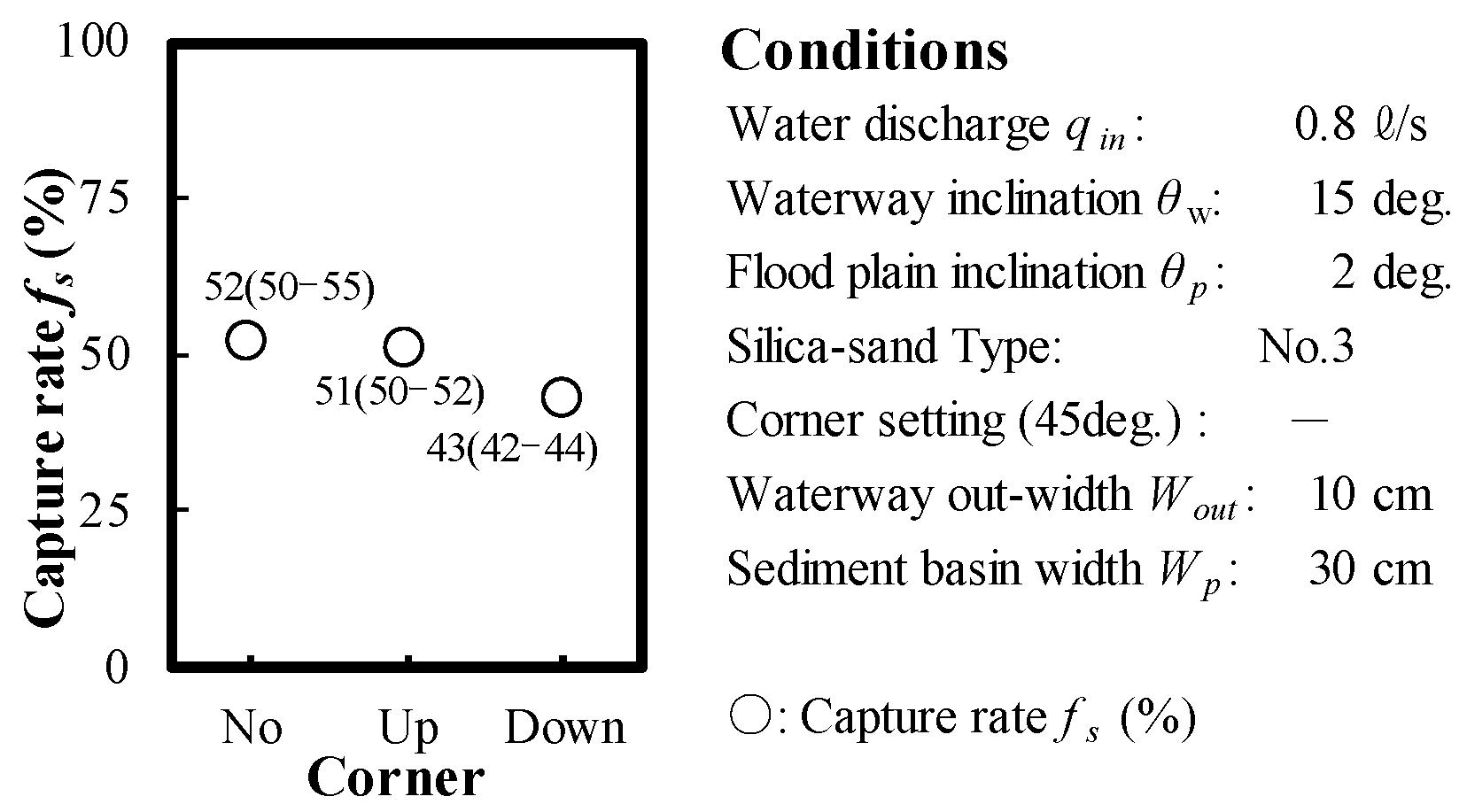




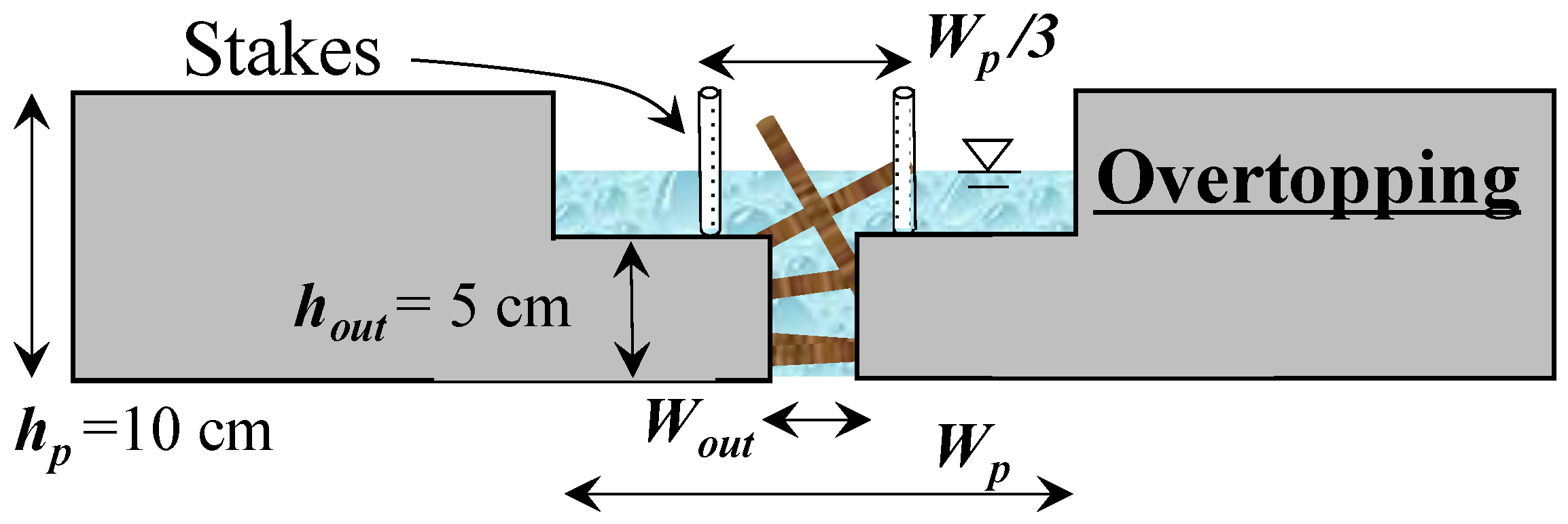














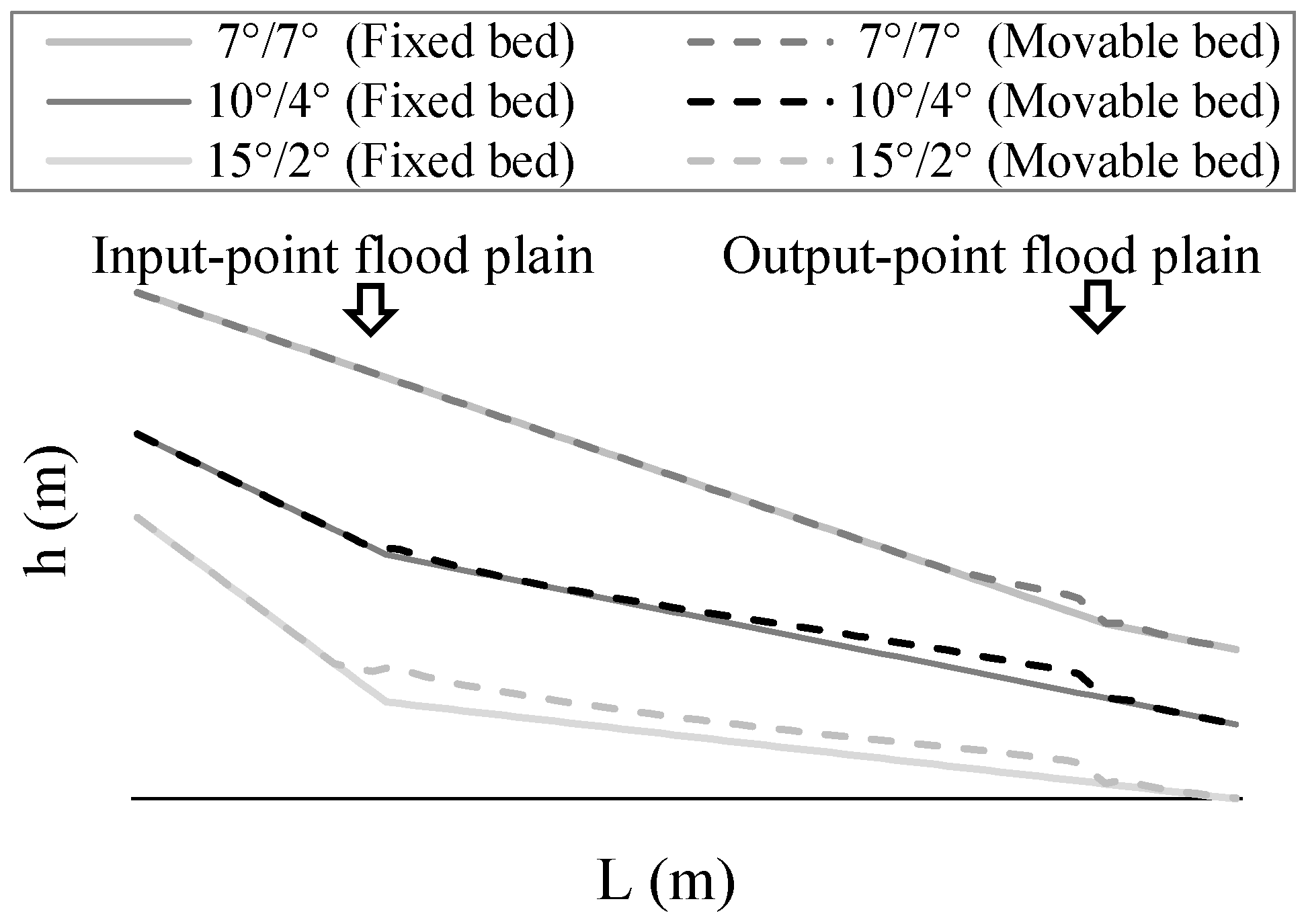
Publisher’s Note: MDPI stays neutral with regard to jurisdictional claims in published maps and institutional affiliations. |
© 2021 by the authors. Licensee MDPI, Basel, Switzerland. This article is an open access article distributed under the terms and conditions of the Creative Commons Attribution (CC BY) license (https://creativecommons.org/licenses/by/4.0/).
Share and Cite
Harada, N.; Nakatani, K.; Kimura, I.; Satofuka, Y.; Mizuyama, T. Mechanisms and Countermeasures on Sediment and Wood Damage in Sediment Retarding Basins. Water 2021, 13, 3283. https://doi.org/10.3390/w13223283
Harada N, Nakatani K, Kimura I, Satofuka Y, Mizuyama T. Mechanisms and Countermeasures on Sediment and Wood Damage in Sediment Retarding Basins. Water. 2021; 13(22):3283. https://doi.org/10.3390/w13223283
Chicago/Turabian StyleHarada, Norio, Kana Nakatani, Ichiro Kimura, Yoshifumi Satofuka, and Takahisa Mizuyama. 2021. "Mechanisms and Countermeasures on Sediment and Wood Damage in Sediment Retarding Basins" Water 13, no. 22: 3283. https://doi.org/10.3390/w13223283
APA StyleHarada, N., Nakatani, K., Kimura, I., Satofuka, Y., & Mizuyama, T. (2021). Mechanisms and Countermeasures on Sediment and Wood Damage in Sediment Retarding Basins. Water, 13(22), 3283. https://doi.org/10.3390/w13223283





